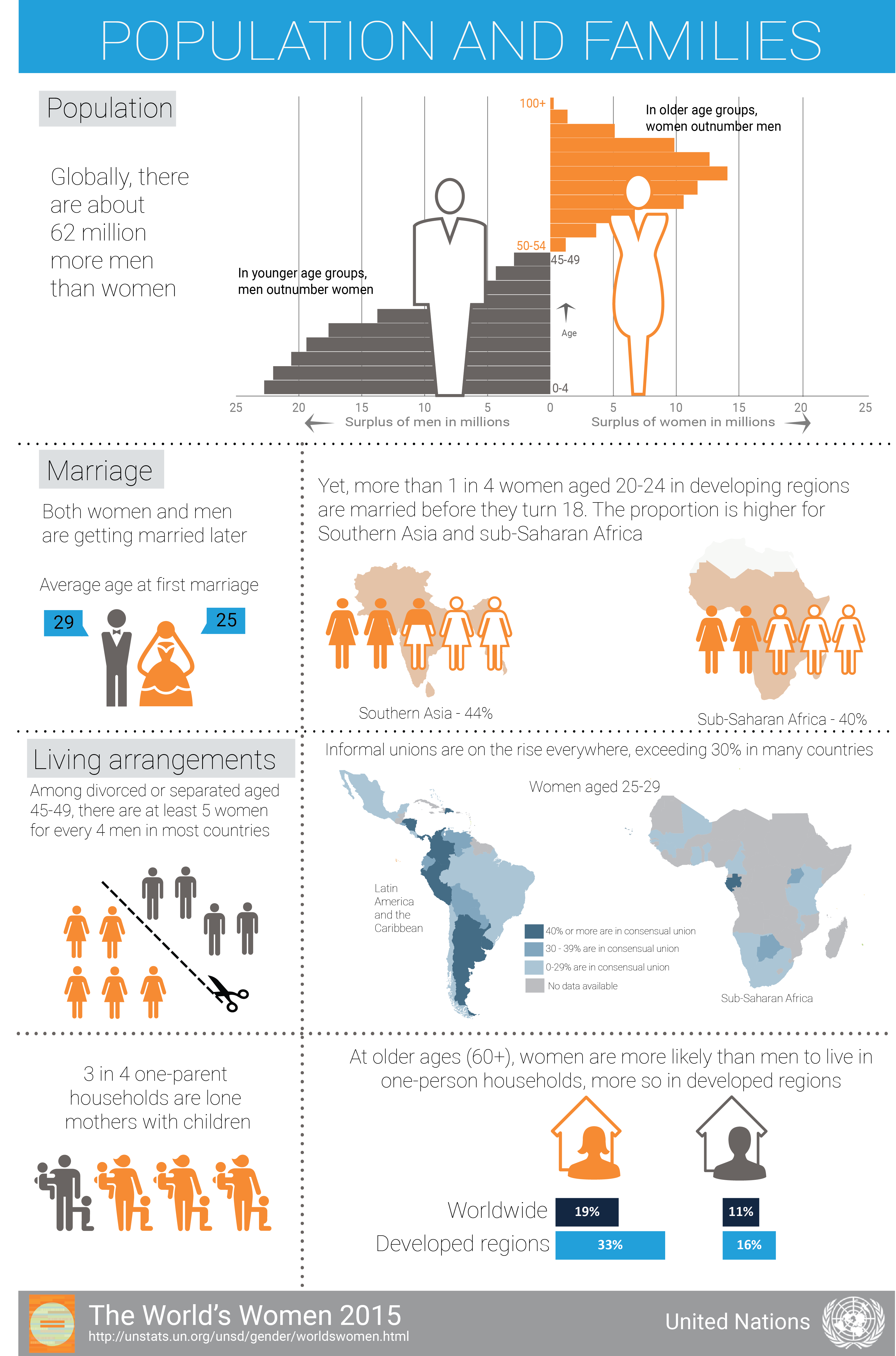Worldwide, men outnumber women by some 62 million. More baby boys are born than baby girls, a by-product of enduring natural selection processes. The slight male advantage in numbers at birth disappears progressively during childhood and young adulthood, owing to generally higher male than female mortality. Consequently, women outnumber men in older age groups. Women represent 54 per cent of the population aged 60 and over and 62 per cent of those aged 80 and over. The number of years lived as a person aged 60 and over is higher for women than for men by about three years. Noticeable differences are also found in the living arrangements of older women and men. In the later stages of life, women are much more likely than men to be widowed and to live alone. This has to be taken into account by programmes and services targeted to older persons, particularly in the context of the increasing share of older persons in the population (population ageing) that is taking place everywhere.
Marriage patterns have also changed over the past two decades. Both women and men are marrying later, a reflection of increases in education levels, later entry into the labour force, greater economic independence of women and a rise in informal unions. Women continue to marry a few years earlier than men, at age 25 on average, compared to 29 for men. The rate of child marriage—a fundamental violation of human rights that limits girls’ opportunities for education and development and exposes them to the risk of domestic violence and social isolation—has declined slightly. Still, almost half of women aged 20 to 24 in Southern Asia and two fifths in sub-Saharan Africa were married before age 18.
Globally, the total fertility rate reached 2.5 children per woman in 2010–2015, a decline from three children in 1990–1995. While fertility fell slightly in countries with high and medium fertility levels, it rose slightly in some countries with low fertility. Increasingly, having children is becoming delinked from formal marriage, as reflected by the increase in the share of extramarital births. As a result of this trend and a rise in divorce rates, one-parent households, among which single mothers with children make up more than three quarters, are becoming common in both developing and developed regions.
